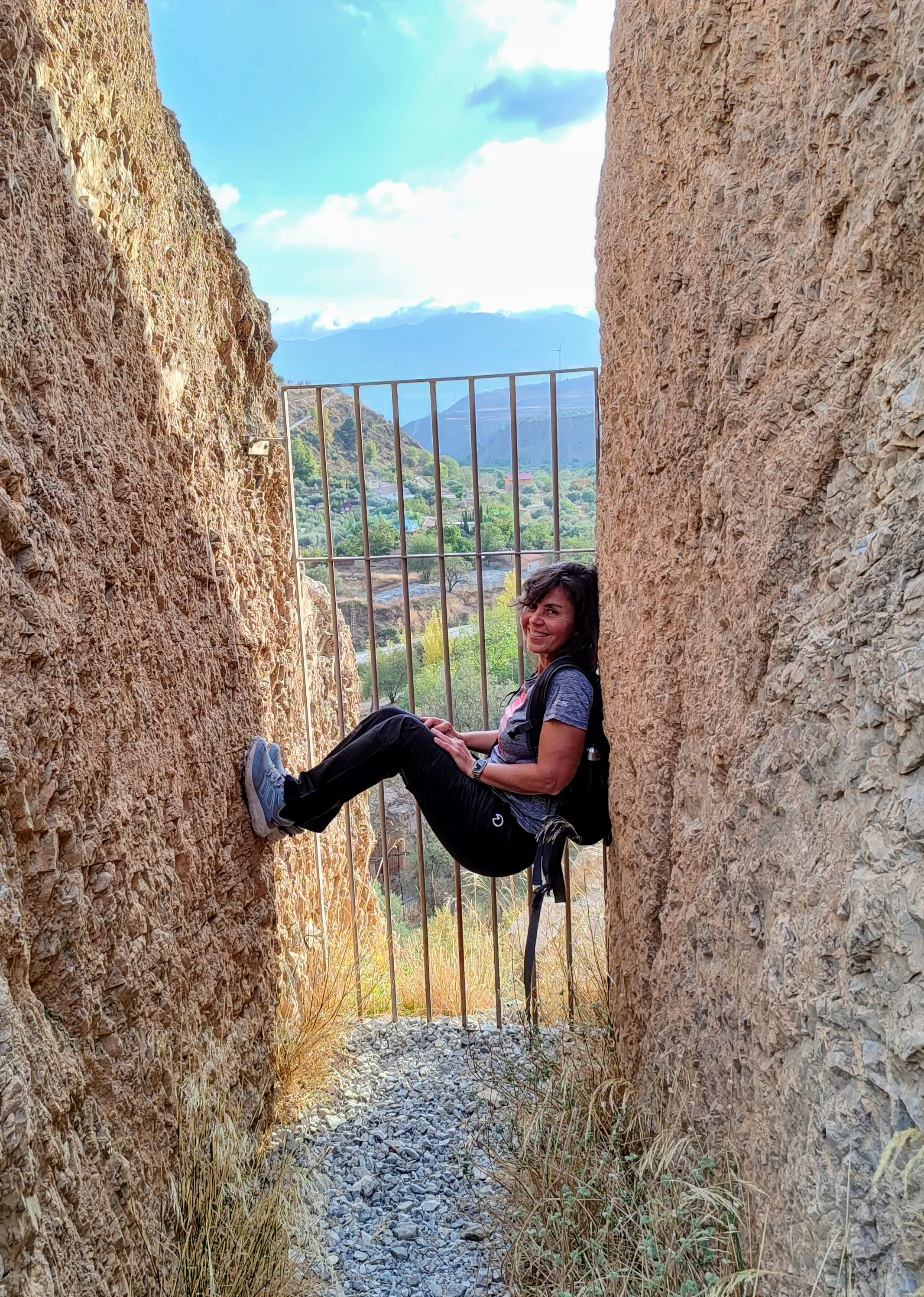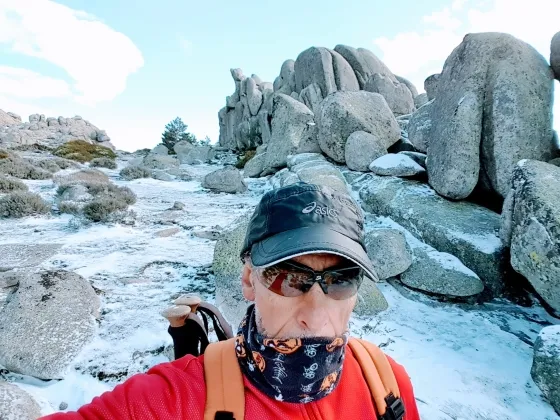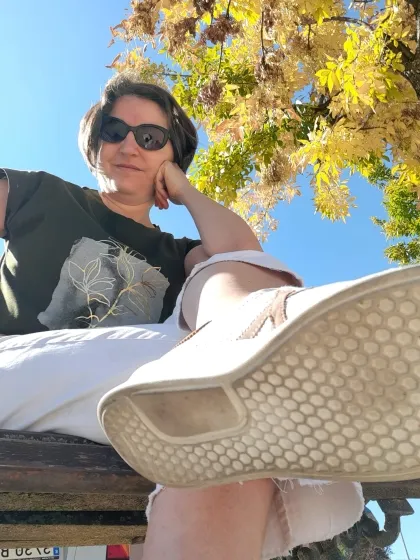I make you a short and paste from
The sugary Jedi blog
What
Has tried on March 8, 2022 .. >>>>>>
Link:
Link
My free -stall experience 3
Sometimes, when I write a post on social networks, there is always more than one that asks me something that is already perfectly explained in those lines under the photo.It is slightly irritating, but the Internet is becoming a means of ultra -granted consumption;The shorter, everything is better.So dedicated to those people who do not want to read, I summarize this post about free 3 in a single line so that they only read this first Lead of the post: "Free 3 is equal to the previous ones, but smaller and more comfortable."That's it.With this great summary those people can leave now.
Free 3, extremely small
The free 3 next to the keys of a computer keyboard.Do you get the idea of how small it is?
Certainly, if I had to summarize this post in a single sentence, that is what I would say;It is the same, but smaller, easy and comfortable.But if you have reached the blog you are not one of those who stay in the photo.So then I explain what my test has been with this third version of the well -known interstitial measurement sensor of ABBOTT diabetes glucose ...
Is there still someone who does not know what is free freeyle?
In case there is still a clueless that does not know and falls on this blog and this post, the free freestyle is an interstitial glucose measurement sensor developed by Abbott Diabetes Care.A system that was launched some years ago and that was totally disruptive and innovative.And perhaps its biggest difference with other "similar" systems is that it positioned itself in a new category;the measurement "flash".A reading of results not in real time but "in deferred" (which would say Cospedal) and a concept invented by the manufacturer that made him different.He was not a continuous meter, he did not play in the same league as his competitors.Having to scan the sensor with an NFC chip was the procedure that made the difference with respect to systems such as Dexcom or Guardian Sensor (previously literate).And thus it was launched in its initial version, which was subsequently followed by version 2, whose difference was that the sensor already included a Bluetooth chip, which allowed the smartphone to have comfortable alarms in case of hypo or hyperglycemia.But nevertheless I did not send the glycemia in real time, since it was necessary to continue scanning them with the NFC chip.A great evolution that when not even in many countries is present, it was already surpassed by the third version;The free 3, which I talked for a long time in this blog and that today is already available in countries such as Germany (external link in English) and that will begin an expansion in the coming months throughout Europe.Free 3 is finally a continuous meter in real time.That is, the same as a Dexcom, a Sensor Guardian or a Day CGM glucomen, the three sensors that we have available today in Spain.Free 3 receives the sensor measurements and sends them by Bluetooth to the smartphone to see them.Without scanning anything.It has become older and is already a full -fledged continuous meter.
Free 3;The definitive version
This sensor should already be the definitive version of a system that from the beginning became one of the most popular and with more advantages.A simple procedure, a indolor placement, a small, ergonomic and discreet sensor-transmitter ... There were many advantages that free from its initial version, and has been maintained and improving in later versions.But why do I say that free 3 should be the final version?Because simply, what has always wanted to be free is a real -time sensor.And it is already.And this allows you to become a sensorIn pump-sensor systems with algorithms, with one of which already has collaboration agreements, such as with the expected Omnipod Horizon.A system with algorithms that can be communicated with Dexcom or Abbott sensors.Now, Abbott has entered to play in the same league as Medtronic and Dexcom.And he has entered strong.The others have to improve their products (and they already have them ready).We will see how the confrontation between the new Dexcom G7, the new Medtronic sensor (called Sinegy in internal code) and the free 3.
Difference of size between free 2 and free 3
This is the difference in size between free 2 and free 3. Without a doubt, the reduction is notorious.And live, it attracts more attention.
How is free freestyle 3?
Starting with size, free 3 is tremendously small.And fulfills what anyone would like with diabetes to make a letter to the Magi asking for the perfect sensor.Because one of those requests would be very small.Free 3 is.Its size is simply impressive.And not only in diameter, but above all (which is even more impressive) in thickness.The thickness of this sensor is tiny.You can never hook with him.In fact, do not notice that you wear anything on.Tiny size and very light weight.A resounding ten.For those who ask me about their adhesives, although their formulations are secret, I logically understand that when having much lower contact surface, the intensity of possible skin problems should be reduced, but this is a simple assumption without any basis,Because what it seems is that who begins to develop allergies to these adhesives, then their body is reactive to any type of glue, whatever it is.Free 3 is in sight the sensor we would all want.But not happy with that, in Abbott the placement technique has improved and have further simplified it.We no longer have two containers;One with the sensor and the other with the applicator, who had to join before putting it on the arm.Now the box only brings a single container;The applicator, which contains the sensor already mounted.Open the box, unscrew the applicator, threate it on the skin (the arm remains its official place) and voila.Even easier.Impossible to improve it.Another ten.Two are there.Thus, the sensor pack that you receive now is a very small box, approximately half of the previous one.SAVINGS OF MATERIALS.Of space.Of plastics.Of cardboardEcology.I do not know why, but the packaging of the sensors of other brands, an authentic festival of paper and cardboard, comes to mind.Another ten for Abbott.There are three.
A single container for the sensor.Faster and simplicity.
A single container for the sensor, and also smaller than the previous one.Faster and simplicity.
For the rest, free 3 is a glucose sensor like everyone else.You are seeing the graph in real time on your phone, although updated every minute, something that others do not (do it every five).This has its advantages and disadvantages.The advantage is that we can see with more "resolution" that happens in glycemia, with more readings per hour.For example, this can be useful when we hope to know what happens after a hiccup ... or when we are waiting to see how a bolus acts that we have put to lower a hyper rebel.But it also has its inconvenience, generating more "nervous" graphics.At least they are seen in the app, although later in Libreview they may be seen more smoothly.
Measure every minute makes more "nervous" graphics?
Measure every minute makes more "nervous."
Therefore, we have a sensor that sends reading the phone every minute.On the other hand, it uses a free call 3, but that inside is identical to what we already know (LibreLink).An app that incorporates allmain statistics to analyze what is happening at every moment and make therapeutic decisions with more foundation.For me it is undoubtedly one of the best apps that there is right now in the world of interstitial sensors.Of course, we also have the app for the caregiver who can see in real time the glycems of whoever carries the sensor, but this time without the handicap to have to wait for that person to scan the sensor.The glycemia will pass to the caregiver without any scanning.Because you don't have to scan the sensor.Just to start it.Once again, simple procedure to the maximum.The sensor with the easiest start -up of all.Another ten.And I have already lost account.That is, once you scan the sensor and activate it, an hour later you will have readings on the smartphone and you don't have to scan it again.Therefore, the receiver that many are still using no longer has a reason to be and disappears in this version.
Within the applicator you can see the reduced sensor size to be placed.
Within the applicator you can see the reduced sensor size to be placed.
Playing free 3 is as easy as always
Playing free 3 is equally easy as its previous versions.
And how is Mard's?(Updated at 1/5/22)
The accuracy.That is one of the aspects that we always value more in a sensor.Which is logical.Even more in a sensor that does not even allow forced calibration.And here I must say that on that subject, Abbott remained the same.While free 2 had a 9.3% MRD (9.2% in adults), the new free 3 initially offered us a figure of ... also 9.2%!.But at the Attd 2022 Congress that has just been held in Barcelona at the end of April, a new study by Abbott in the United States has yielded updated down with 7.8%.However, in my test sensor I have not noticed that difference.Although with free something always happens to me that does not happen to me so much with other sensors: a kind of lack of consistency, what do I call consistency?To which sensor after sensor, accuracy remains (more or less) the announced.Or at least stable in the life of the sensor.But sometimes, a free sensor measures clearly worse.This, which can happen with any market sensor (remember that there are 834747283 variables that can influence the accuracy and operation of an interstitial sensor), it has always happened to me with Abbott's.When I tried free 2, already in the first sensor I did not have a good experience in terms of accuracy.And in this free sensor 3 that I have tried ... it has happened to me again.The free 3 that I have tried began offering me a fairly unacceptable deviation that I achachy and forgave for being the first day.Between 18% and 20% specifically.Much, too much.They had to spend three days for the accuracy of free 3 to improve, until they were in figures that moved between 5% sometimes and 10% many others.But the first three days remained in poor accuracy figures.I think we have to work on that issue of accuracy in the beginning because we remember that it is a sensor calibrated in origin, so we cannot do absolutely anything to improve it beyond praying to all the gods and deities that each one we haveIn mind.Abbott's clinical trials already show in their graphs that the free sensor 3 behaves very well in its central period, but also show that it is more failure in the first days.From here I encourage this issue to whom it corresponds, because people with diabetes generate problems using a sensor three days with deviated figures.Especially if now free 3 will be the one who manages an insulin pump with algorithms.Then I attach a few of the many comparative measurements that I made between three devices: on the leftGuardian Sensor 3, in the center the acu-chek guide capillary meter of Roche and to the right the free 3 (black and white photos).
Free comparison 3
Starting the sensor.Free shows an important deviation.
Free comparison 3
Four hours later, Free 3 remains diverted, showing about 20% deviation with capillary.
Free comparison 3
The first day continues to progress and free 3 remains diverted very much as it fits from its theoretical 9.2%.
Free comparison 3
Twelve hours after the beginning, free 3 is still "decentralized", showing values always quite above reality.
Free comparison 3
No 24 hours have been completed since its inception.The important deviation continues.
Free comparison 3
A day of use of the sensor.It is clear in the values that is not yet accurate, and in hyperglycemia it shows a much higher value ...
Free comparison 3
Two and a half days are met and finally similar values are seen to those of the other reference sensor and the capillary meter.
Free comparison 3
Three days after the beginning, free 3 begins to show its theoretical accuracy.
Free comparison 3
When a sensor works well, I don't know why, but you feel an indescribable feeling of peace.
Free comparison 3
Five days after the start of the sensor.
Free comparison 3
The days pass and the free 3 remains in its accuracy declared once it manages to overcome its initial "drunkenness."
Free comparison 3
Although Guardian Sensor is not the most exact sensor, he generally remained close to capillary reading, and really freely 3 surpassed him in exactness, as in this image.
For Holy God, let me choose the graph!
Special chapter deserves that of the glycemia graph of the free, which traditionally shows an excessively broad and unnecessary number of hours.I would ask Abbott to please allow the app to show another number of hours that is not the current 12 huge and endless hours, that visualized and condensed on a mobile screen always induces the scare and even the mistake, because it is being shownHalf a condensate in a tight graph and full of ups and downs, which offers no utility in the management of day -to -day diabetes.But it would be useful to see the last 3 hours, which is the graph that we generally use more frequently to see the trend and what is happening at every moment.So for the holy God, I ask once and for all the possibility that almost everyone already gives, to be able to choose the range of hours we show on the screen.It is absolute and totally necessary and urgent functionality.Enough of seeing graphs that seem to quote of the stock market.We want to see the last 3 hours.And since I mention the app, we continue with it ...
Interoperability, neither is nor expected
The app is absolutely the same as that of free 2, but the 3 requires its own app, which is finally already available for both iOS and Android.For me it is a good app because it shows us the basic statistics that we can need for day to day without having to go to the Libreview platform.On the other hand, the app for followers is also the same, that is, everything remains the same.
Free Apps comparative 2 and 3
The free app 3 is specific to this sensor, but nevertheless inside it is the same as that of its previous versions.
But there is something that bothers me because we are already talking about what I consider the final version of the free, to which in Abbott they aspired from the beginning.And it is that in this version there is still no integration with anything.We continue with the Juan Palomo mode, I stepped on it, I like it.There is still no possibility that the readings are available on third -party devices, on a smartband, on a smartwatch, or better yet, read the data on a pulsometer, in aCICLOCOMPUTOR, integrate it into Google Assistant, Alexa, Siri ... or in any other device that already exists or believes tomorrow.And that is essential.I don't know if they understand in the industry (I think so, but they don't seem to listen to us yet) that users want to be able to treat that information with any third -party device.And today they still want to catch their readings with the same intensity that Gollum grabbed the unique ring in Tolkien's history.And said that - although I have already said it many times - I'm finishing ...
Free 3 after fourteen days
At the end of the sensor's life, the adhesive already took off at its edges, although the sensor remained firmly stuck to the skin.I had no problem.
Free size 3
It is not only its small size, but also its scarce thickness.
Little more to say: conclusions
Free 3 is a sensor that changes almost nothing ... but at the same time it changes everything.I don't know how to explain it.Nothing changes because the sensor's operation is the same.If you have handled a 1 or 2, you will know how to handle the 3. It does not change its operation.It does not change its accuracy.Does not change your app.But ... it changes everything because it takes a giant leap when making a sensor like the one who would ask for any person with diabetes if they took a blank sheet.Small, very small, very easy to put, very easy to start, very easy to handle, long -lasting ... in short, it is the sensor that we would all want to put on the arm (the arm is still the official place).A sensor that once placed do not find out that you carry it.He doesn't feel pressured when you lean on that side in bed.That cannot be taken off with the door frames.That is difficult to grab even wanting.So for all those aspects commented at the beginning of the paragraph, free 3 is approaching perfectly.As the only suggestion to Abbott, I would only say that they continue working the issue of consistency between sensors, as well as accuracy in their early days.
Free packaging 3
Smaller, finer, less wrapper, simpler ...
I liked free 3.Although it continues to measure the same as always, it persists in its tendency not to be consistent between one sensor and another and it measures worse at the beginning, the truth is that it is impressive to see it on the arm.It is even elegant, almost distinguished.For the first time I do not feel bad carrying a striking sensor that others look sideways.If the free 1 and 2 were aesthetically successful sensors, the 3 is now a mini button more typical of a James Bond movie.And finally, the answers to the most common questions.How much is worth?Its price will continue to be the same as the 2 and that the 1st ten.And not.I don't even have the most remote idea of when he will be here in Spain.Nor in the countries of Latin America.But in Spain I imagine that throughout this year we should not have it, yes at least know the dates.Although I do not think it is before this 2022 ends, given the proximity to the recent implementation of its previous version.Free 3 has become the sensation in the world of sensors.And he has achieved it despite the fact that, basically, he is still the usual ... but better.






